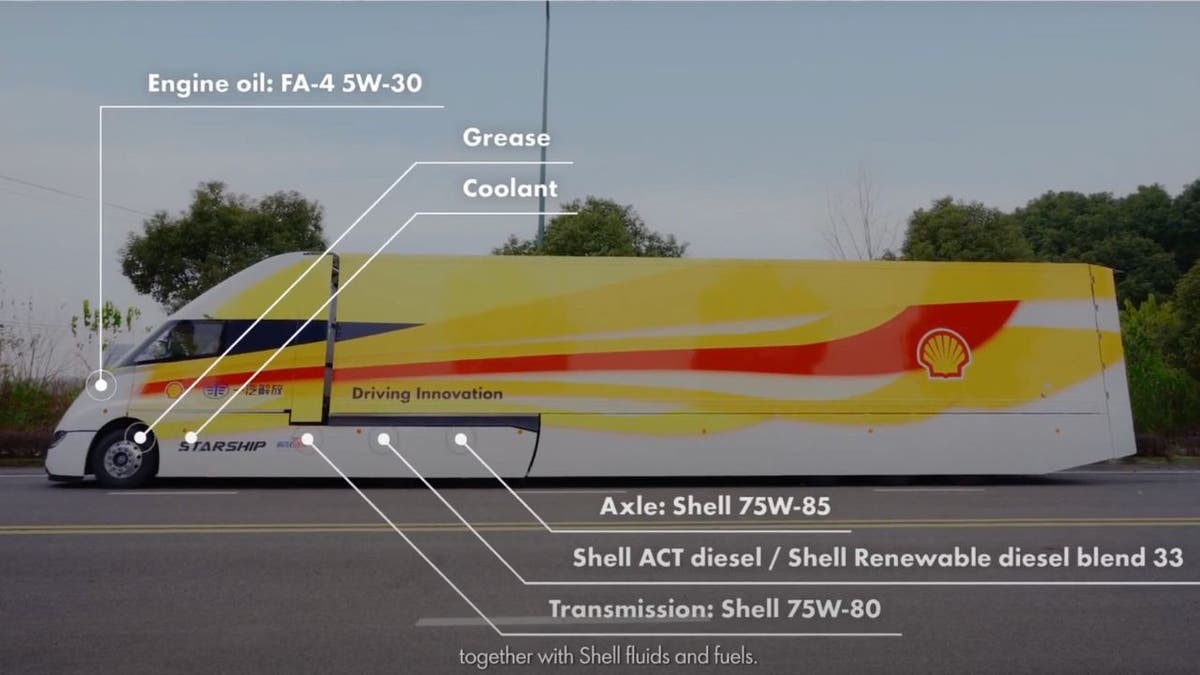The Shell Starship Initiative has consistently pushed the boundaries of fuel efficiency in the trucking industry since 2018. While the initial Starship models demonstrated significant improvements using diesel, the unveiling of Starship 3.0 marks a pivotal shift towards a greener approach with its Cummins X15N natural gas engine. This innovation promises not only enhanced performance but also a substantial reduction in emissions.

Shell's journey with the Starship Initiative began with a focus on maximizing energy efficiency in commercial trucking. Earlier Starship versions, powered by diesel, achieved commendable fuel economy compared to industry norms. However, the integration of the Cummins X15N natural gas engine in Starship 3.0 signifies a strategic move away from diesel, tackling both environmental impact and operational costs.
Introduced in 2024, the X15N engine is purpose-built for heavy-duty operations, overcoming past constraints associated with natural gas as a fuel. It delivers comparable power to diesel engines while boasting superior fuel efficiency and considerably lower emissions. This is especially crucial as the trucking sector faces mounting pressure to comply with increasingly stringent environmental regulations.

Starship 3.0: A Closer Look at the Features
Starship 3.0 boasts a suite of advanced features that distinguish it in the trucking world. Every detail, from the natural gas powertrain to the aerodynamic design, is optimized for efficiency and emissions reduction. Here are some key highlights:
Natural Gas Powertrain: The adoption of the Cummins X15N engine enables Starship 3.0 to utilize various forms of natural gas, including renewable sources. This flexibility not only boosts its environmental credentials but also presents a viable alternative for fleets transitioning from conventional fuels.
Weight Optimization: The X15N engine is significantly lighter than its diesel counterpart (approximately 500 pounds), allowing for increased freight capacity. This weight saving, combined with other lightweight materials in the truck's construction, contributes to an exceptional ton-miles per gallon efficiency of 183, far exceeding the industry average of 72.
Aerodynamic Design: The streamlined design, featuring curved edges and optimized aerodynamics, minimizes wind resistance. Further enhancements like low rolling resistance tires and integrated aerodynamic panels contribute to its overall efficiency.
Advanced Lubricants: Shell has formulated specialized lubricants designed for the higher operating temperatures of natural gas engines. The truck utilizes Shell Rotella NG Plus SAE 5W-30 synthetic oil, specifically engineered for this purpose, along with advanced transmission lubricants to enhance overall performance.
Real-World Validation: Feedback from experienced truckers has been instrumental in refining the Starship's design and functionality. Their practical experience with all three Starship iterations provides crucial data for continuous improvement.

Performance and Impact
Starship 3.0's performance figures are remarkable. It surpasses its predecessors with a freight ton efficiency 2.542 times greater on a ton-miles per gallon basis. It achieves an average fuel consumption of 9 mpg (diesel gallon equivalent) while carrying a maximum load of 80,000 pounds. The emissions reductions from using renewable natural gas strengthen its environmental profile, positioning it as a sustainable choice for forward-thinking fleets.

Starship 3.0 demonstrates how technological advancements can revolutionize the trucking industry while addressing environmental concerns. This initiative sets new standards for energy efficiency and provides a practical pathway for fleets to minimize their environmental impact.
Comments(0)
Top Comments